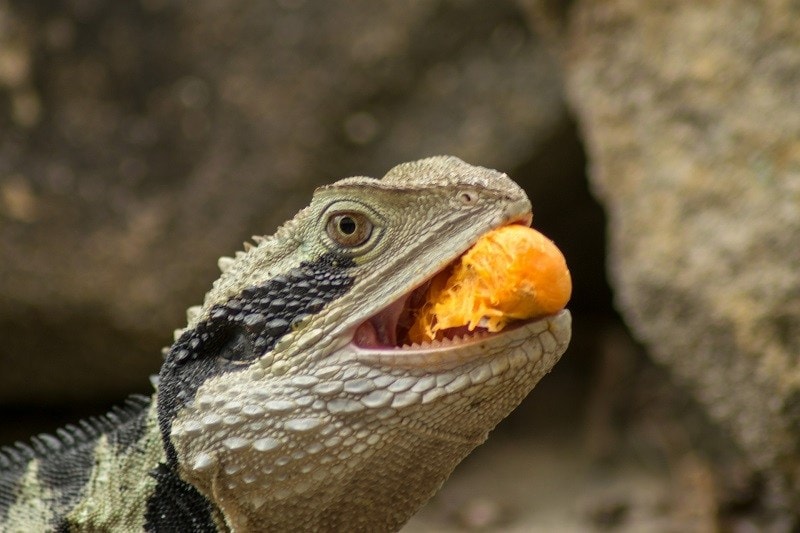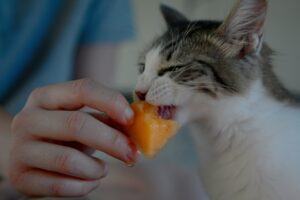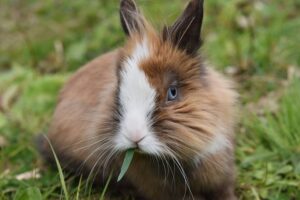Lizards are fascinating animals, and that extends to their eating habits. Watching them focus on their prey, then go incredibly still until…their tongue shoots out of their mouth, dragging that hapless animal to its doom.
However, given that these animals are so furtive, most people never see what it is they’re eating. Bugs? Worms? Jolly Ranchers?
Regardless of whether you’re interested in a lizard’s diet out of sheer curiosity or because you’re thinking of getting one as a pet, learning about how these strange little animals eat is both fun and educational, so strap in.

A Word Before We Get Started
There are many different species of lizards, from the tiny Jaragua lizard to the mighty Komodo dragon. As you might expect, they don’t all eat the same thing, so take the information that follows as a generalization only.
Also, lizards live in all sorts of different locations, including deserts, rainforests, and quite possibly your own backyard. Their natural environment will go a long way towards dictating what they eat.
If you’re planning on getting a lizard as a pet, be sure to research what that specific species eats. Some of these animals have incredibly specialized diets, and you don’t want to feed your pet the wrong thing.
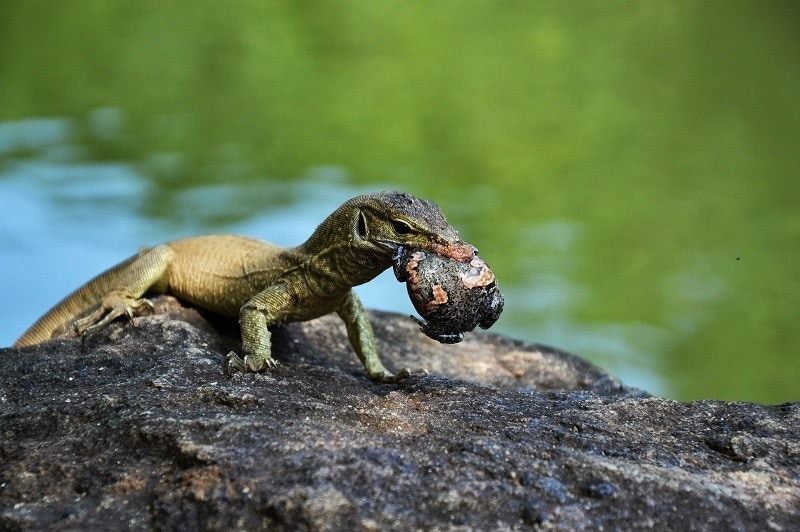
What Lizards Eat in the Wild
As mentioned above, a lizard’s diet in the wild will be largely dictated by its natural habitat — that is to say, it’ll eat what’s available to them.
More often than not, what’s available is insects. Lots and lots of insects. They’ll also steal eggs if given the chance, as eggs require little effort to hunt, given that they don’t run very fast.
The specific type of insect that the lizard eats will depend on their size. Most lizards eat crickets, grasshoppers, locusts, and similar bugs, but some will also eat larger prey like scorpions and spiders. However, smaller lizards are more likely to be prey than predator to those insects.
Larger lizards have been known to eat injured birds and other lizards as well. At the most extreme end of the spectrum, you’ll find Komodo dragons, which can eat water buffalo, pigs, and even humans. These lizards often consume 80% of their body weight in a single sitting, and since they can weigh as much as 150 pounds, that’s a lot of meat to hunt down.
Lizards don’t always eat meat, though. Some lizards also eat fruit and vegetables, with small berries being a particular favorite. Lizards that live in aquatic habitats will also eat algae, although this is usually only done in a pinch.
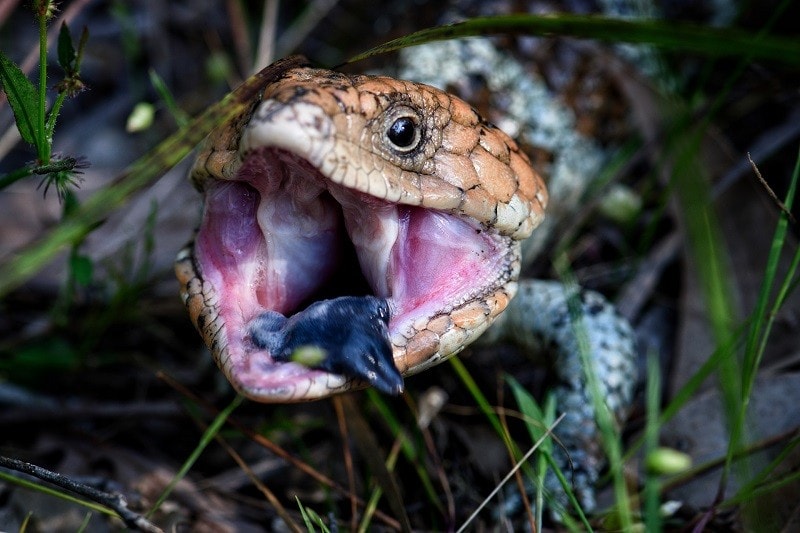
What Lizards Eat When Kept as Pets
We’re assuming that you’re not planning on owning a Komodo dragon, so there’s no need to track down a water buffalo or an unruly child to feed your lizard. Most lizards that are kept as pets are geckos, iguanas, or chameleons, so we’ll largely focus on them.
A lizard that’s kept as a pet will eat most of the same things they’d eat in the wild — or they should, anyway. The biggest difference is they won’t have to hunt very hard for their prey, as it will be hand-delivered to them (thanks for that, by the way).
One of the biggest things that will determine a captive lizard’s diet is how easy their prey is to procure. Crickets are sold at most pet food stores, so they’ll generally make up the bulk of a pet lizard’s diet. You can always supplement with insects you catch yourself, and this can add some much-needed variety to your lizard’s diet, but check that whatever you caught is suitable for your pet before offering it to them.
Other options include mealworms, Dubai roaches, and wingless fruit flies. Some larger lizards also eat small mice, but many pet stores won’t sell live rodents as feeder animals, so you’d have to convince your reptile to eat a frozen one instead. You can also give your lizard fruits and plants, but these should be in addition to the protein sources listed above, rather than in place of them.
If the thought of feeding your lizard another living thing creeps you out, there are a few species that eat plants and fruit almost exclusively. These include green iguanas, Uromastyx, and Solomon Island skinks. These lizards eat leafy green vegetables, squash, peaches, bananas, and more.
- RelatedRead: What do Baby Lizards Eat in the Wild and as Pets?
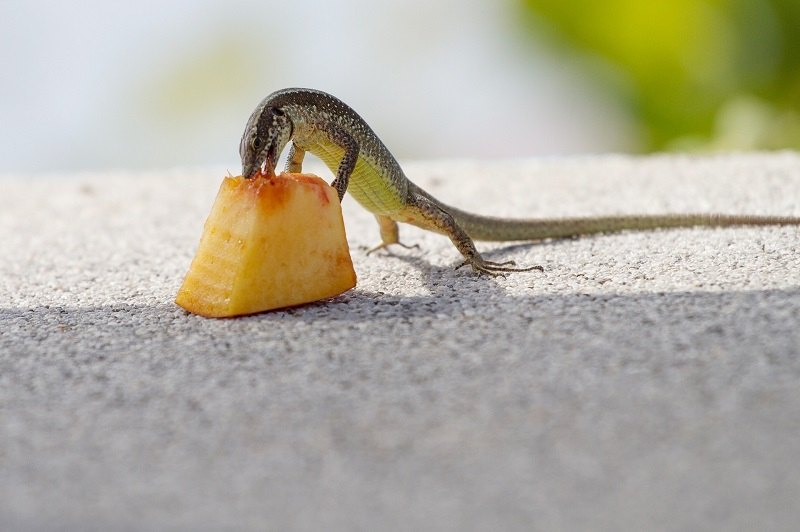
How to Feed a Lizard
It may seem that feeding a lizard is as simple as dumping some bugs in their tank, and in some cases, that’s true. However, it’s not so easy with other species.
Many lizards see their metabolism slow down at night, rendering them sluggish and unresponsive. If there are still uneaten insects in their tank at this time, those bugs could attack and injure them. As a result, it’s generally recommended to remove any live bugs before nightfall and serve them again the next day.
On the other hand, some species are nocturnal, in which case you should do the exact opposite. Do specific research on whichever species you bring home so that you know when to feed them.
If you’re feeding your lizard fruits or vegetables, you should remove uneaten food before it goes bad and starts to mold. Also, be sure to keep it in a bowl or similar container so that your lizard doesn’t eat some of their substrate along with their salad.
Owners of larger lizards like monitors or tegus may want to give their pet mice to eat. If so, your best bet is to buy pre-killed frozen mice rather than tossing live creatures in the tank. Not only is this more humane, but it also reduces the risk the mice will harm your lizard. Simply defrost the mice in warm water before offering them to your pet.

A Well-Fed Lizard is a Happy Lizard
Most lizards aren’t too picky about what they’ll eat, but for the most part, you should offer them a steady stream of size-appropriate insects. If you like, you can supplement this with fruits and veggies, but giving them lots of protein is paramount.
Feeding a lizard is fairly easy, which is one of the reasons why these low-maintenance pets are so popular. Even better, watching them eat is tons of fun, and you can entertain yourself for hours on end watching them stalk and slurp down crickets and other annoying bugs.
You may also be interested in:
- 10 Lizard Species Found in California (With Pictures)
- 7 Lizards Found in Washington
- 10 Lizard Species Found in Florida
Featured Image Credit: EvaBane, pixabay

